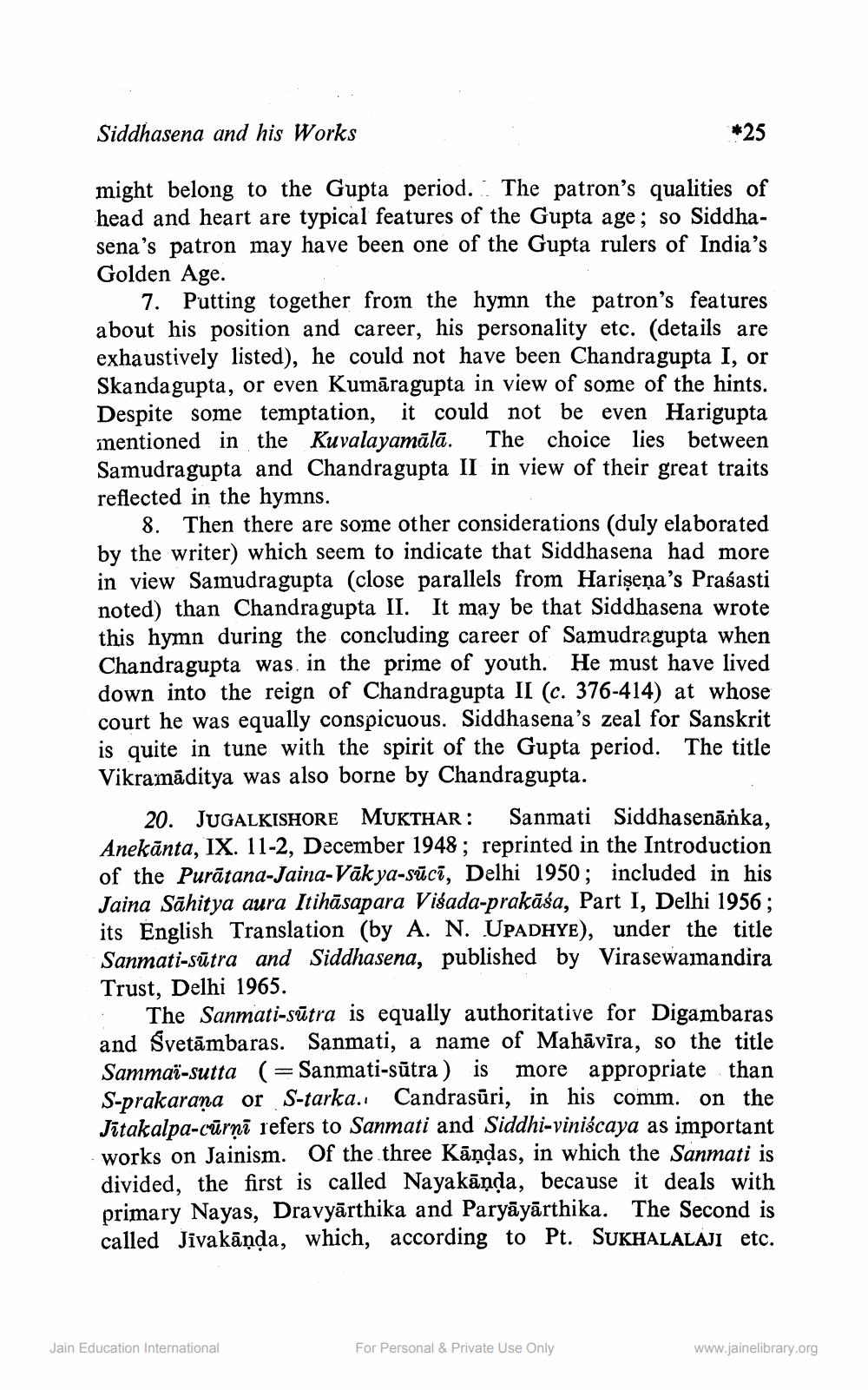________________
Siddhasena and his Works
*25
might belong to the Gupta period. The patron's qualities of head and heart are typical features of the Gupta age; so Siddhasena's patron may have been one of the Gupta rulers of India's Golden Age.
7. Putting together from the hymn the patron's features about his position and career, his personality etc. (details are exhaustively listed), he could not have been Chandragupta I, or Skandagupta, or even Kumāragupta in view of some of the hints. Despite some temptation, it could not be even Harigupta mentioned in the Kuvalayamālā. The choice lies between Samudragupta and Chandragupta II in view of their great traits reflected in the hymns.
8. Then there are some other considerations (duly elaborated by the writer) which seem to indicate that Siddhasena had more in view Samudragupta (close parallels from Harişeņa's Prasasti noted) than Chandragupta II. It may be that Siddhasena wrote this hymn during the concluding career of Samudragupta when Chandragupta was, in the prime of youth. He must have lived down into the reign of Chandragupta II (c. 376-414) at whose court he was equally conspicuous. Siddhasena's zeal for Sanskrit is quite in tune with the spirit of the Gupta period. The title Vikramāditya was also borne by Chandragupta.
20. JUGALKISHORE MUKTHAR: Sanmati Siddhasenāńka, Anekānta, IX. 11-2, December 1948; reprinted in the Introduction of the Purātana-Jaina-Vākya-sūcē, Delhi 1950; included in his Jaina Sāhitya aura Itihāsapara Visada-prakāśa, Part I, Delhi 1956; its English Translation (by A. N. UPADHYE), under the title Sanmati-sūtra and Siddhasena, published by Vira sewamandira Trust, Delhi 1965. : The Sanmati-sūtra is equally authoritative for Digambaras and Svetāmbaras. Sanmati, a name of Mahāvīra, so the title Sammaï-sutta (=Sanmati-sūtra) is more appropriate than S-prakaraṇa or S-tarka. Candrasūri, in his comm. on the Jītakalpa-cūrņī refers to Sanmati and Siddhi-viniscaya as important works on Jainism. Of the three Kāņdas, in which the Sanmati is divided, the first is called Nayakāņda, because it deals with primary Nayas, Dravyārthika and Paryāyārthika. The Second is called Jivakāņņa, which, according to Pt. SUKHALALAJI etc.
Jain Education International
For Personal & Private Use Only
www.jainelibrary.org




